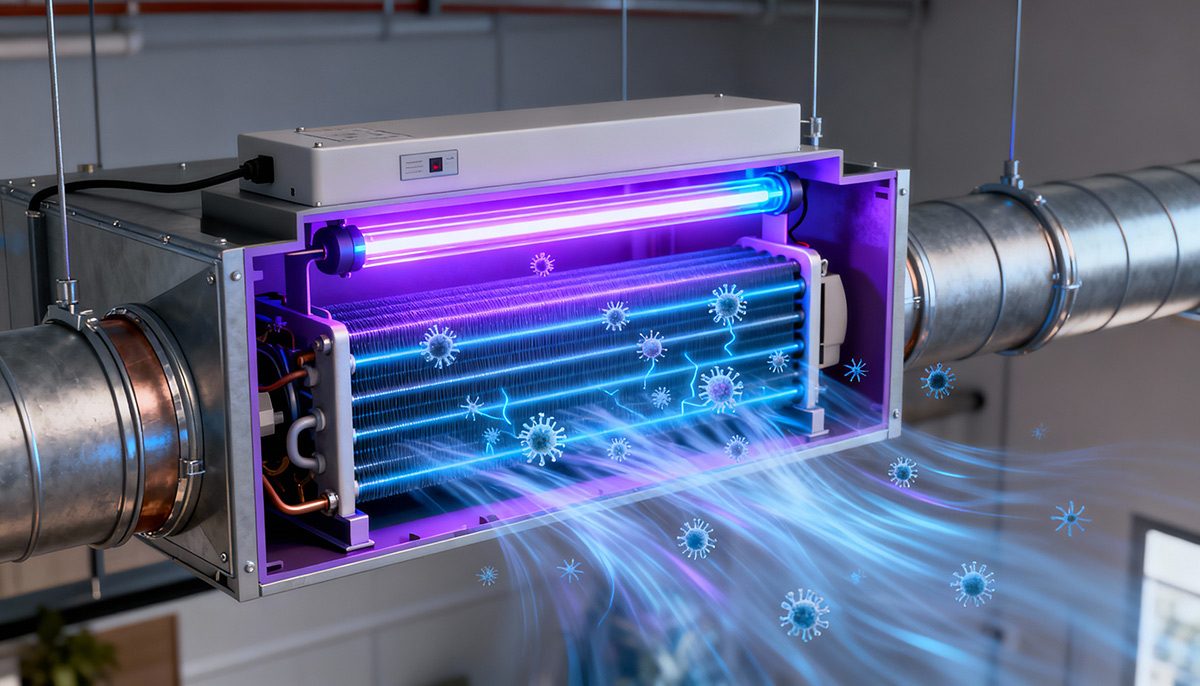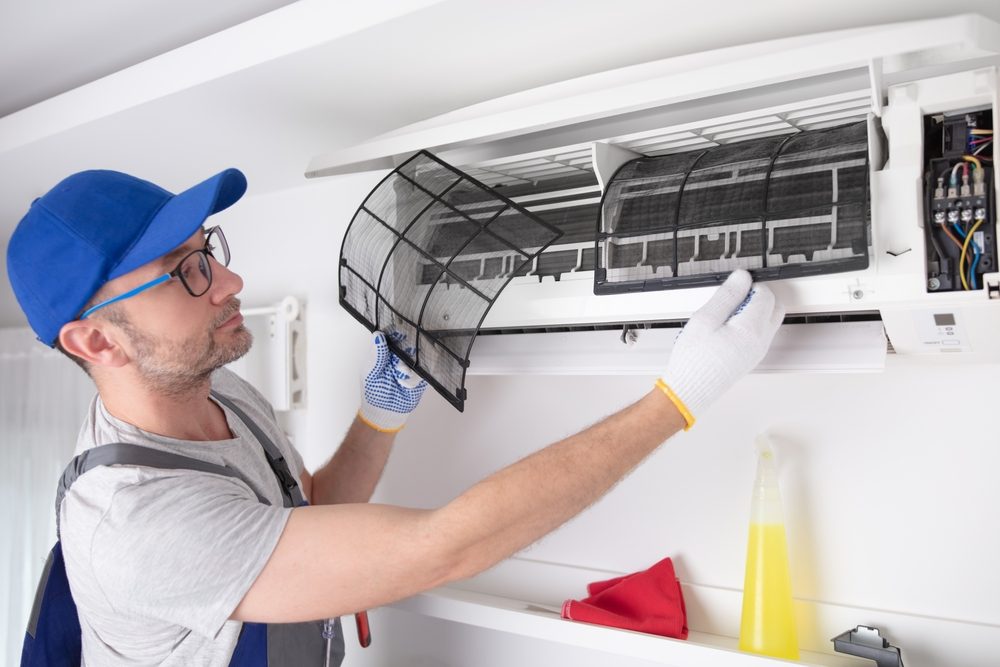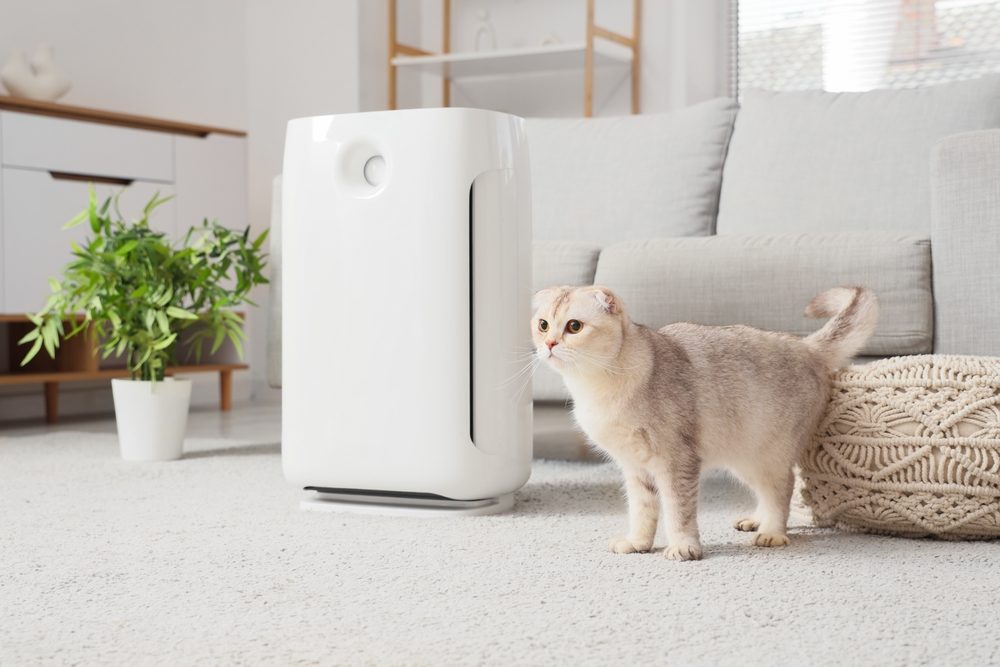
In this up-to-date 2025 guide, we will cover everything you need to know about HVAC systems, including their various uses, components, and types, as well as advice on choosing the right system. But before we get to that, let’s start with some basic definitions.
What is the meaning of HVAC?
HVAC is an acronym for heating, ventilation, and air conditioning. As you might expect, it is a system that regulates the temperature, humidity, and air quality of indoor spaces. An HVAC system can employ elements such as furnaces or boilers, various types of ventilation systems, and air conditioning units.
When working together, these systems regulate temperature and humidity and keep the air fresh from pollutants and allergens. HVAC systems are critical when creating indoor environments that are safe and comfortable for people to use.
Components of an HVAC system – explained
Let’s break down the three key elements of HVAC – heating units, ventilation ducts, and air conditioning before we look at how they work together.
- Heating units: Heating units generate heat to raise indoor temperatures during cold weather. A furnace burns fuel (natural gas or oil) to produce heat while boilers heat water to circulate through radiators or underfloor heating systems. The result is the interior of the building becomes warmer.
- Ventilation ducts: Ventilation ducts form a network of pathways throughout the building, allowing for the exchange of indoor and outdoor air – with fresh outdoor air entering and stale indoor air leaving. These systems often also filter out contaminants and pollutants. Ductwork can also distribute heated or cooled air from the HVAC system.
- Air conditioning units: These units regulate the indoor temperature and humidity. They are usually made up of compressors, condensers, evaporators, and refrigerant lines. During the process, refrigerant is compressed and circulated through the system, absorbing heat from indoor air and releasing it outdoors. In this way, it cools the indoor environment and reduces humidity.
How these three HVAC elements work together
HVAC works together to regulate air temperature, humidity, and overall air quality as follows: heating units raise indoor temperatures; ventilation systems ensure the circulation of fresh air and the removal of pollutants; and air conditioning units maintain comfortable temperatures and humidity levels by cooling and dehumidifying the air.
Types of HVAC systems
These are the key types of HVAC systems:
- Split systems: Split systems are the most common type of HVAC system, consisting of two main components: an indoor unit, which contains the evaporator coil and blower, and an outdoor unit that houses the compressor and condenser coil. These systems are versatile and can be used for both heating and cooling.
- Packaged systems: Not as common as the above-mentioned split systems, these packaged systems are compact, suitable for smaller structures, and are often found on a rooftop, within an attic, or near the building’s base. They integrate both heating and cooling components within a singular unit.
- Hybrid split system: These use the same structure and cooling unit as a split system, but they differ in that they can burn gas or switch to electric power. While electric heating can be slower and less powerful, it does facilitate more control over a building’s energy consumption.
- Zoned system: These systems use dampers in the ductwork to direct air to specific areas of a building. In this way, they give more control over the temperature in each room or floor in a building.
- Ductless mini-split systems: As the name suggests, these systems provide air conditioning or heating without the use of ductwork. They do this by using an outdoor compressor or condenser unit and indoor air-handling units, giving greater flexibility and energy efficiency.
- Hydronic heating: This system stands out as it uses a boiler to heat water, which is then distributed around the building with under-floor piping before reaching a radiator or floor heating system.
- Portable spot cooler: These air conditioning units can cool down large rooms or even outdoor spaces by drawing in air and then pushing it through a refrigerant-cooled closed-loop coil before distributing it back into the room or outdoor space.
- Portable heat pump: While this shares a great deal with the spot cooler, it also offers a heating function as well. A reversing valve allows switching between heating and cooling.
How do you choose the right HVAC system?
When selecting an HVAC system, there are several factors to consider:
Building size: As a first step, it’s essential to know the square footage and building layout to determine the likely heating and cooling load requirements and then to ensure the HVAC system you select isn’t too large (or too small) for the job at hand.
Climate: Putting together a research document that includes the local climate conditions, usual temperatures, humidity levels, and so on is a vital step. It’s also crucial to include whether the area is susceptible to extremes of weather in the summer or winter.
Energy efficiency ratings: Finally, make sure you select an HVAC system with a good efficiency rating – this can be done by checking for certifications that demonstrate compliance with environmental standards.
Conclusion
Doing your research and due diligence is important before deciding on the right HVAC system. As we have noted in this article, it’s crucial to consider a number of factors, including the specifics of the problem you’re trying to solve, the climate in which you operate, as well as costs and efficiencies.
Daikin is a world leader in HVAC systems, offering a wide range of solutions tailored to meet diverse building requirements – including residential, commercial, and industrial. Daikin offers a full lineup of split systems, packaged units, ductless mini-split systems, VRF (VRV) systems, and more, each designed to deliver exceptional performance, energy efficiency, and comfort.
With innovative, pioneering technology and exceptional service, Daikin has sold millions of systems in 140 countries. If you would like to find out more about Daikin’s products, contact us today.



